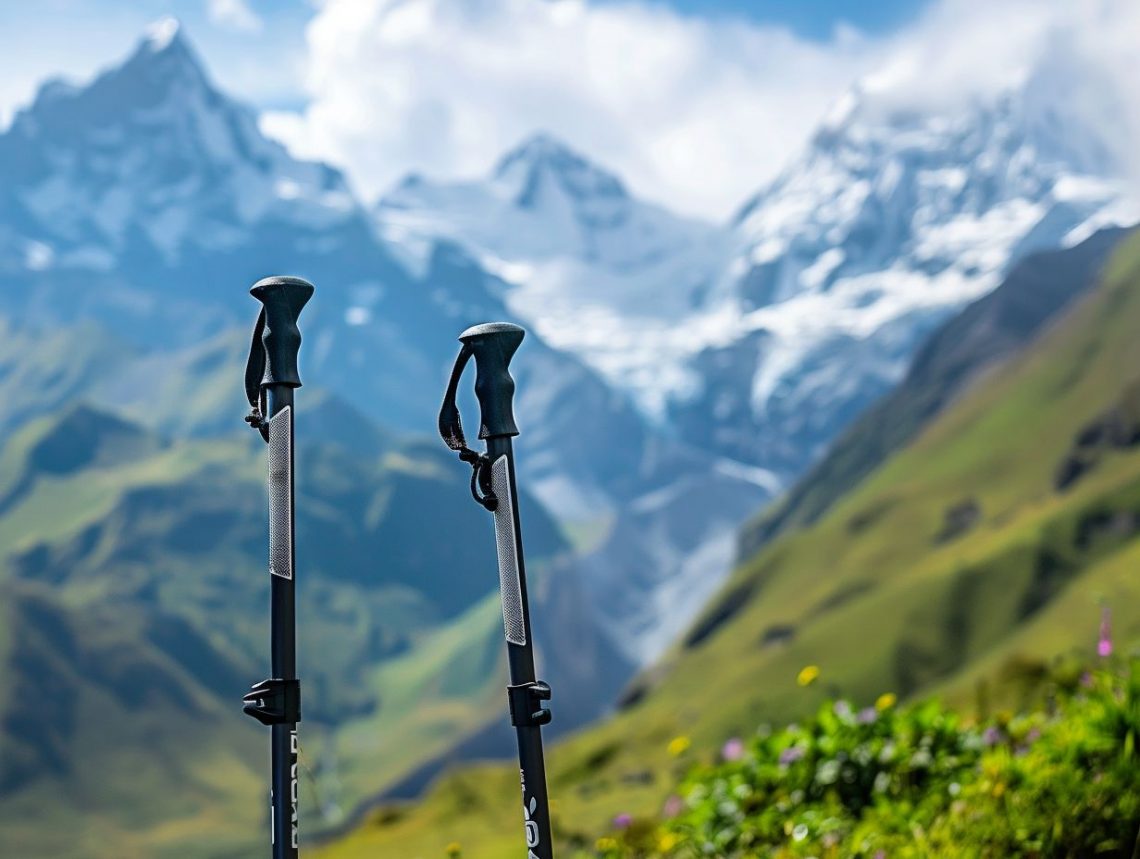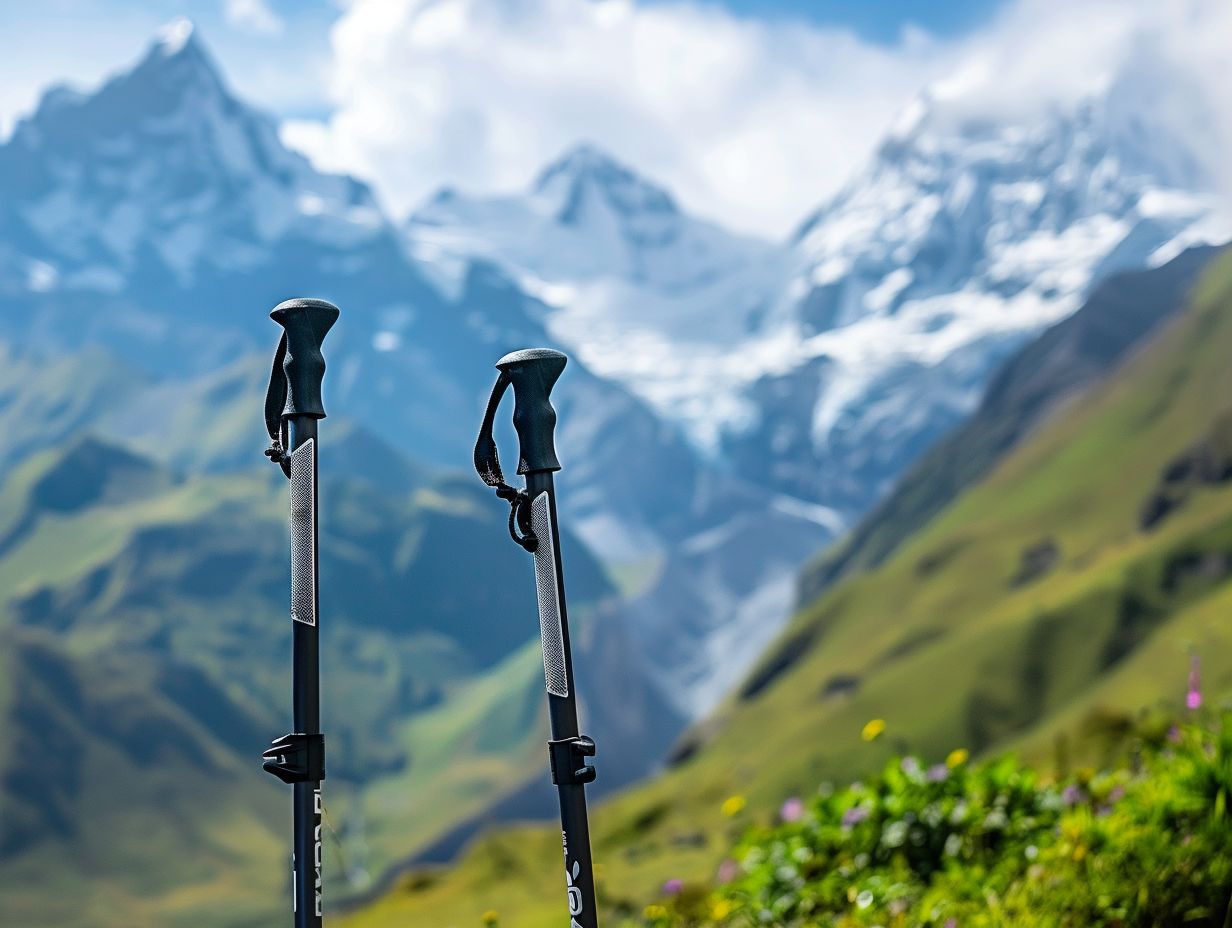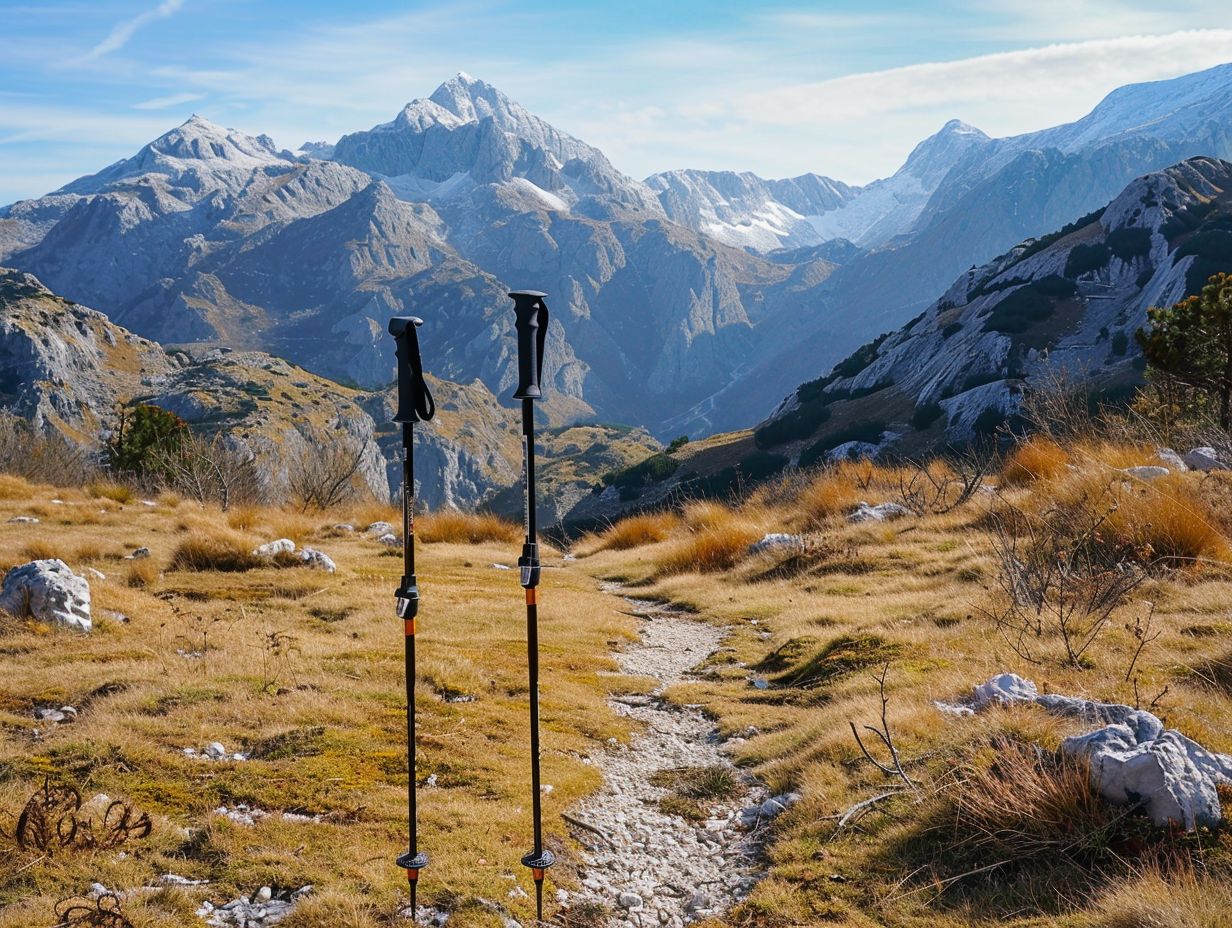
Trekking Poles For Kilimanjaro
If you’re planning to conquer the majestic Mount Kilimanjaro, trekking poles can be your best companions on the journey. But what exactly are trekking poles, and why are they so essential for this adventure?
In this article, we will explore the benefits of using trekking poles on Kilimanjaro, including how they help with balance, reduce strain on knees, and improve stability. We will also discuss the different types of trekking poles available, the features to look for when choosing the right ones, and provide tips on how to use them effectively.
So, lace up your boots and get ready to discover why trekking poles are a must-have for your Kilimanjaro expedition.
Key Takeaways:

- Trekking poles provide stability and balance while trekking on Kilimanjaro, reducing the risk of falls and injuries.
- Using trekking poles on Kilimanjaro can help reduce strain on the knees and distribute weight, making the climb more comfortable and less tiring.
- When choosing trekking poles for Kilimanjaro, consider features such as durability, weight, grip, and shock absorption for optimal performance.
Why Are Trekking Poles Useful for Kilimanjaro?
Trekking poles play a crucial role in enhancing the hiking experience on Mount Kilimanjaro, the highest peak in Africa, by providing stability, support, and reducing strain on the body, especially during challenging terrains and altitude changes.
Do Trekking Poles Help with Balance?
Trekking poles significantly aid in maintaining balance while trekking, especially on uneven or challenging terrain, by providing additional points of contact with the ground and aiding in weight distribution, minimizing the risk of slips or falls.
One crucial aspect that enhances the efficacy of trekking poles is the grip type they feature. Grips play a vital role in providing comfort and stability.
Commonly, trekking poles come with grips made from materials like cork or EVA. Cork grips offer a natural feel and moisture-wicking properties while EVA grips provide cushioning and shock absorption.
Do Trekking Poles Reduce Strain on Knees?
The use of trekking poles can help reduce strain on the knees by absorbing some of the impact from walking on challenging terrain, distributing the load more evenly across the body and providing additional support to the joints.
When descending steep slopes or navigating rocky surfaces, trekking poles become invaluable in maintaining balance and stability, thus minimizing the stress on knee joints.
Proper utilization of these poles ensures that the body weight is not solely concentrated on the knees, but distributed to the arms and the poles as well, offering a well-rounded support system.
Wearing appropriate gloves while holding the poles not only enhances grip but also prevents blisters and reduces strain on the hands and wrists, making the trekking experience more comfortable and safe.
Do Trekking Poles Help with Uphill Climbing?
Trekking poles offer significant assistance during uphill climbing by engaging the upper body muscles, reducing the workload on the legs, and promoting a more efficient and balanced movement pattern.
By planting the poles firmly and pushing down on them, hikers can propel themselves forward with less effort, ultimately making the ascent smoother. This action helps distribute the weight more evenly.
Adjusting the poles to the right height ensures that they effectively transfer power and support from the arms to the ground. This also helps in maintaining an optimal posture and stride while tackling challenging terrain.
A comfortable grip is equally important during prolonged hikes. Choosing poles with ergonomic handles that fit well in hand can greatly reduce hand fatigue and blister formation, allowing hikers to focus more on the trail ahead.
Do Trekking Poles Help with Downhill Descending?
When descending steep slopes or navigating downhill terrain, trekking poles play a critical role in maintaining balance, reducing pressure on the knees and joints, and providing stability, especially on challenging surfaces where slips are more likely.
Trekking poles are equipped with shock-absorbing mechanisms that help minimize the impact of each step, effectively reducing strain on the lower body.
This shock absorption feature is particularly valuable when tackling uneven or rocky paths, where every jolt can reverberate through the body without proper support.
These poles assist in maintaining a more natural and ergonomic posture during descents. By distributing some of the weight onto the poles, hikers can alleviate stress on their knees.
Telescopic poles are versatile and adjustable, making them an excellent choice for varied terrains, while folding poles offer compactness and convenience for travelers who prioritize portability.
What Are the Different Types of Trekking Poles?
There are three main types of trekking poles: Carbon Fiber , Aluminum poles preferred for their strength and affordability, and Cork or EVA grip poles.
Carbon Fiber trekking poles are popular among ultralight hikers due to their strength-to-weight ratio. They provide excellent shock absorption and are ideal for long treks.
On the other hand, Aluminum poles are reliable and sturdy, making them suitable for rugged terrains and heavy backpacking. Cascade Trekking Poles is a notable brand known for its high-quality Aluminum poles.
Cork or EVA grips offer a comfortable and ergonomic handle that conforms to your hand over time, reducing fatigue. These grip materials are breathable and moisture-resistant, ensuring a secure hold even in wet conditions.
1. Telescoping Poles
Telescoping poles are adjustable in length, making them versatile for changing terrains and user preferences. They offer varying grip options and are suitable for hikers who require flexibility and adaptability in their trekking gear.
The customization factor of telescoping poles allows users to adjust the length to suit their height and walking style, providing a personalized hiking experience.
The portability of these poles is another significant advantage, as they can be collapsed down to a compact size for easy transport and storage.
With the availability of different grip variations such as cork, foam, or rubber, hikers can choose the type that offers the most comfort and support for their hands during long treks.
2. Folding Poles
Folding poles are compact and collapsible, ideal for hikers seeking convenience and space-saving solutions. They feature ergonomic grips and robust joints, ensuring reliability and comfort during outdoor excursions.
These poles provide a convenient solution for adventurers who value portability and ease of use, as they can be easily stowed away in a backpack when not in use.
The ergonomic design of folding poles allows for efficient weight distribution, reducing strain on the arms and shoulders during long treks. The collapsible nature of these poles makes them versatile for various types of terrains.
Their adjustable length feature caters to hikers of different heights, ensuring a customized and comfortable hiking experience.
3. Fixed Length Poles
Fixed-length poles are sturdy and straightforward, offering reliability in challenging conditions suitable for trekkers who prefer a non-adjustable design for consistent support.
One of the key features of fixed-length poles is their stability, providing a strong foundation when navigating varied terrains. Their rigid structure ensures a consistent height, preventing any accidental adjustments.
The lack of moving parts makes them less prone to mechanical issues during extended use. Another advantage of fixed-length poles is their simplicity, which appeals to hikers seeking a hassle-free experience.
With no locking mechanisms to adjust, these poles are quick to deploy and require minimal setup, perfect for those who prioritize convenience on the trail.
The grips on fixed-length poles play a crucial role in maintaining comfort and control. It is vital to choose poles with secure grips that offer a firm hold, especially when traversing steep or rough terrain.
What Features Should You Look for in Trekking Poles for Kilimanjaro?
When selecting trekking poles for a Kilimanjaro adventure, consider features such as comfortable grip and adjustable wrist straps for enhanced control, as well as effective shock absorption mechanisms to reduce impact on joints and improve overall trekking experience.
1. Durability
Durability is a key factor in trekking poles, as they need to withstand the rigors of challenging terrains and continuous use.
When you’re out exploring rugged trails or conquering steep ascents, having a reliable set of trekking poles can make all the difference in your hiking experience.
The demands of the terrain can put significant stress on your gear, especially the poles that support you every step of the way. Choosing poles crafted from durable materials like Carbon Fiber or Aluminum is essential.
The joints of the poles are another critical aspect to consider, as sturdy connections can prevent wobbling or potential breakage, providing stability and support throughout your journey.
2. Weight
The weight of trekking poles is a crucial consideration, especially for long hikes and high-altitude treks like Kilimanjaro, opt for lightweight poles without compromising on durability or support.
Lightweight trekking poles are essential for reducing strain on your arms and upper body during long treks. Choosing poles made from advanced materials like Carbon Fiber can significantly decrease the overall weight you carry.
This can lead to less fatigue and greater endurance, allowing you to cover more ground comfortably. Lightweight poles are easier to maneuver and require less energy to swing, making them ideal for challenging terrains.
3. Grip and Wrist Straps
Comfortable grips and adjustable wrist straps are essential features in trekking poles for Kilimanjaro, as they provide secure handling, reduce hand fatigue, and enhance control over varied terrains.
One crucial aspect of these features is the design of the grips, which should ergonomically fit the hand to prevent blisters and discomfort during long treks.
The moisture-wicking properties of the wrist straps are also vital in keeping hands dry and comfortable, especially in challenging weather conditions.
Ensuring compatibility with different types of gloves, such as New Balance Gloves, enhances versatility and usability across various trekking scenarios.
4. Shock Absorption
Effective shock absorption mechanisms in trekking poles help reduce impact on joints and muscles when traversing uneven or rocky terrain, providing a cushioning effect that minimizes discomfort and fatigue.
The constant jolts and vibrations from rugged paths can lead to sore joints and muscle fatigue if not properly managed. This is where the shock absorption feature in trekking poles becomes crucial.
The ability of high-quality trekking poles to absorb and dampen the shock of each step allows trekkers to maintain a more stable and secure footing, enhancing their overall trekking experience.
By reducing the strain on joints, particularly the knees and ankles, trekking poles help prevent injuries and ensure a more comfortable journey.
How to Use Trekking Poles on Kilimanjaro?
Proper usage of trekking poles on Kilimanjaro involves adjusting pole length based on terrain, using a planting motion to provide stability, and coordinating arm movements with step rhythm.
When selecting the ideal pole length, it’s essential to consider the varying terrains you may encounter on Kilimanjaro. For steep uphill sections, shortening the poles can offer better leverage and power.
Conversely, lengthening the poles for downhill stretches can aid in reducing impact on knees and joints.
Adapting your technique to the landscape is crucial. Planting the poles firmly with each step can distribute weight effectively, especially on loose gravel or rocky paths.
By synchronizing your arm movements in rhythm with your steps, you create a fluid motion that boosts stability and support.
What Are the Benefits of Using Trekking Poles on Kilimanjaro?
Using trekking poles on Kilimanjaro offers numerous advantages, including reduced strain on joints, enhanced stability on challenging terrain, and improved weight distribution that minimizes fatigue.
1. Reduces Strain on Joints
One of the primary benefits of using trekking poles on Kilimanjaro is the reduction of strain on joints, particularly in the knees and ankles, by providing additional support, stability, and shock absorption.
When trekking poles are used correctly, they can significantly decrease the impact placed on the lower body joints, distributing the load more evenly throughout the body.
By engaging the upper body muscles, trekking poles help to share the burden of the hiker’s weight, thereby lessening the strain on the legs. Studies have shown that utilizing trekking poles can reduce compressive forces on the knees by up to 25%.
This reduction in joint stress not only improves overall joint health but also enhances endurance and comfort during long ascents and descents.
2. Increases Stability and Balance
Enhanced stability and balance are key benefits of trekking poles on Kilimanjaro, as the ergonomic grips and wrist straps provide secure handling, reduce the risk of slips or falls.
Having proper grip usage is crucial as it ensures that the trekking poles effectively transfer the weight off your legs and provide additional support, especially on steep ascents and descents.
The compatibility of gloves with the pole grips can further enhance comfort during long treks, preventing blisters and reducing hand fatigue.
Adjusting the wrist straps to the right length not only optimizes power transfer but also helps maintain a steady rhythm and balance, boosting endurance and minimizing strain on joints.
3. Distributes Weight and Reduces Fatigue
Not only do trekking poles provide stability on uneven surfaces, but they also offer significant support when navigating steep inclines and descents, helping to alleviate pressure on the knees and ankles.
This distribution of weight reduces the impact on lower body joints, preventing potential injuries and discomfort that can hinder a hiker’s progress.
The use of appropriate gloves is crucial when trekking in challenging conditions. They not only offer enhanced grip on the poles, preventing slippage, but also provide insulation and protection.
What Are Some Tips for Using Trekking Poles on Kilimanjaro?

To maximize the benefits of trekking poles on Kilimanjaro, ensure proper pole length adjustment, maintain a natural arm swing motion, focus on rhythm and coordination with steps, and practice using poles on varying terrains.
For optimal pole length adjustment, stand with the pole tip on the ground at a 90-degree angle to your elbow. This position ensures that your arm forms a right angle when holding the grip.
A comfortable arm swing motion involves a slight bend at the elbow to reduce strain on shoulders. Focus on creating a seamless rhythm between your poles and steps, coordinating movements to distribute weight efficiently.
Regularly switching between single and double pole use can help distribute effort between upper body and lower body, reducing fatigue in specific muscle groups.
It is vital to practice on varied terrains like rocky paths, steep inclines, and descents to adapt to different conditions.
Frequently Asked Questions
1. What are the benefits of using trekking poles for Kilimanjaro?
A: Using trekking poles for Kilimanjaro can provide numerous benefits such as increased stability and balance, reduced impact on joints, and improved posture and endurance during long hikes. They can also help distribute weight evenly, making it easier to carry a heavy backpack.
2. What type of trekking poles are recommended for Kilimanjaro?
A: When choosing trekking poles for Kilimanjaro, it is important to consider the terrain and weather conditions. Adjustable and collapsible poles made of lightweight materials like carbon fiber are ideal for the varying terrain on the mountain.
3. Do I need to bring my own trekking poles for Kilimanjaro?
A: While it is not required to bring your own trekking poles for Kilimanjaro, it is highly recommended. Many tour companies provide rental poles, but they may not be of the best quality or fit for your specific needs. It is best to bring your own poles that you are comfortable and familiar with.
4. Can trekking poles help prevent altitude sickness on Kilimanjaro?
A: Trekking poles can indirectly help prevent altitude sickness on Kilimanjaro by helping to regulate your breathing and pace. However, they should not be relied on as the sole method for preventing altitude sickness. It is important to acclimatize properly and stay hydrated.
5. Do I need to use trekking poles for the entire trek on Kilimanjaro?
A: No, trekking poles are not necessary for the entire trek on Kilimanjaro. They can be especially helpful during steep ascents and descents, but you may choose to hike without them on flatter sections. It is important to listen to your body and use the poles whenever you feel they can provide support.
6. Are trekking poles allowed on Kilimanjaro?
A: Yes, trekking poles are allowed on Kilimanjaro. However, they must have rubber tips to prevent damage to the mountain’s delicate ecosystem. Some tour companies may also have specific regulations for using trekking poles, so it is important to check with them beforehand.

